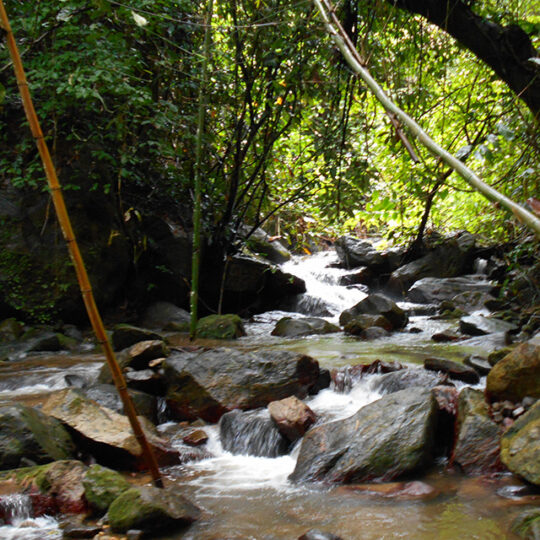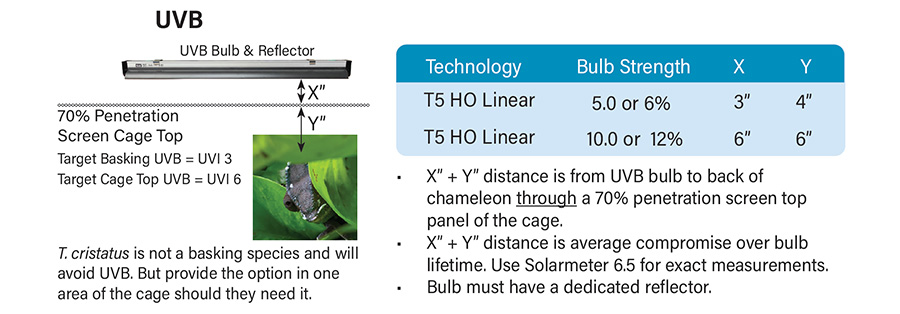Introduction to Trioceros cristatus - the Crested Chameleon
Trioceros cristatus, the Crested Chameleon, is one of those fascinating species which few know about, but, once they do, it quickly becomes a favorite. The species is characterized by the prominent sail fin on their back and the sexual dimorphism of the males being a rich chestnut brown with the females being a bright green!
Trioceros cristatus is relatively rare in captivity, but it is legal to export/import as of 2022 and so there is a chance that more may be available. Should this happen, my desire is that this husbandry reference would make sure the experienced breeding community would be as ready and as successful as possible in establishing them in captivity.
This care summary has been developed with a compilation of breeding experiences. The bulk of the information, though, comes from Jurgen Van Overbeke who has bred T. cristatus for 15 years at this point. The care summary may be downloaded and printed if desired. It may be referenced, in its entirety, by other websites and the care summary may be handed out by veterinary offices, pet stores, or any entity that desires to pass along solid husbandry information. The care summary has a QR code which may be used to reference this web page where further details as to what all the numbers on the care summary mean. In addition, you may reference the podcast episode below which is an interview between me (Bill Strand) and Jurgen Van Overbeke. In it we review the husbandry parameters of the Crested Chameleon.
Trioceros cristatus Natural History
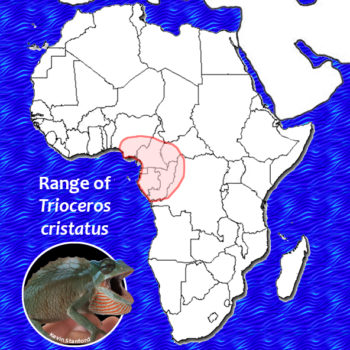
Trioceros cristatus is often called the Crested Chameleon. T. cristatus is a rarely imported species. Though, they are not necessarily difficult to breed. It is a popular species for those who know it exists! It is a lowland species that is report the be found from 0 up to 900 meters above sea level. It has a wide range in Western Africa, but we see them imported usually from Cameroon.
Trioceros cristatus Caging
Typical chameleon cage sizes are used for the crested chameleon (Trioceros cristatus). A minimum of 2’x2’x4′ or 36″x18″x36″ is recommended. Note that this species requires high humidity so screen cages should be used only in areas that have high humidity in the actual room they are kept. Most keepers will find hybrid cages necessary for this species. T. cristatus husbandry is different int he way that these are an undergrowth species and will rarely bask if the conditions are proper. This is why having a densely planted cage is critical. While panther and Veiled chameleons will stay hidden until they settle down and get familiar with the cage and you, the crested chameleon will stay undercover all its life. Although this is an easy chameleon to keep, it is still best saved for the special type keeper that can accept a chameleon that likes to stay hidden!
Trioceros cristatus Temperature & Humidity
Temperature
The crested chameleon comes from lowland areas and so does not get the steep nighttime drops we are used to providing for highland species such as Jackson’s and Veileds. They do enjoy the mild room temperatures so they really are an easy species to care for as far as temperature. They are not much for basking so you can either put a weak basking bulb just in case or else just rely on the heat generated from a T5 lighting array. The best thing to do is to offer some sort of basking and then monitor their behavior. All chameleons will bsk if they are cold. So what your basking light set-up will consist of depends fully on what your ambient conditions are.
Humidity
Humidity is a serious consideration. The Crested Chameleon likes high humidity. In the wild this is not a problem because there are breezes. In captivity we have a direct give and take between ventilation and humidity. A screen cage can be used in higher humidity rooms, but a hybrid cage is going to be the cage of choice for most keepers. The first challenge is to create and maintain the comfortable humidity levels. The second is to make sure the cage surfaces are able to dry out during the day. The care summary parameters show the ideal situation. If your day time humidity needs to go lower to make sure the surfaces dry out it should be fine if your nighttime humidity and morning misting are fully engaged.
Trioceros cristatus UVB
The most challenging parameter on this care summary to put into numbers is the UVB levels in the cage. The Crested Chameleon does not spend much time basking under the lights. So it is difficult to tell what levels to target. The UVB targets presented here are the standard levels found successful for panther and veiled chameleons. Though these are higher basking species there will be a level of UVB under which it is ineffective for the D3 synthesis and we simply do not know what that level is. So, UVI 3 is the safest to put as a target to offer. For this species offer it in one section of the cage as an opportunity if they decide they need it.
The key is to have dense planting in the cage where it is easy for your Crested Chameleon to have cover from the lights.
Captive Husbandry Summary
Jurgen Van Overbeke is a chameleon breeder in Belgium who has extensive experience with a wide range of chameleon species. He offers his insight into breeding and keeping Trioceros cristatus.
“Trioceros cristatus is also known as the Crested Chameleon. It is from the Republic of Cameroon and is a rainforest species. Both the male and female have a high crest. The male is reddish orange while the female is green. The male will get a beautiful line of blue dots on their helmet.
T. cristatus requires a well planted terrarium. Like Parson’s Chameleons, they sit in the same place for long periods of time. In a departure from what we are used to, T. cristatus tends to hunt near the ground. Gives them lots and lots of real plants to make them feel at home!
T. cristatus is a lowland species that likes temperatures between 75 and 80F. You can give a basking spot, but they seem to rarely use it. As they are a lowland species, a dramatic nighttime temperature drop is not necessary. They are big drinkers so it is important to give them fogging at night for at least a few hours and run a dripper during the morning and later afternoon. They are not picky eaters. This is an egg layer and incubation at room temperatures can go 10-11 months. The babies can be quite large and can be sexed at 2 months old.”

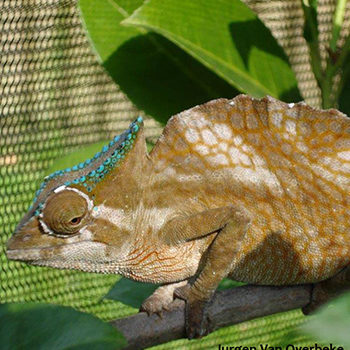
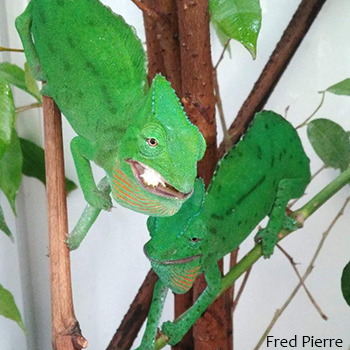
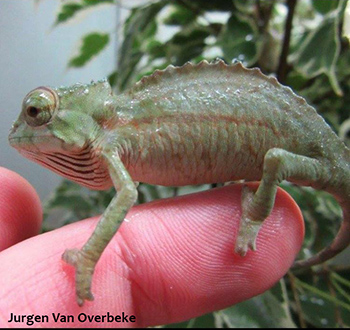
The following are profile studies compiled by Christian Kaul
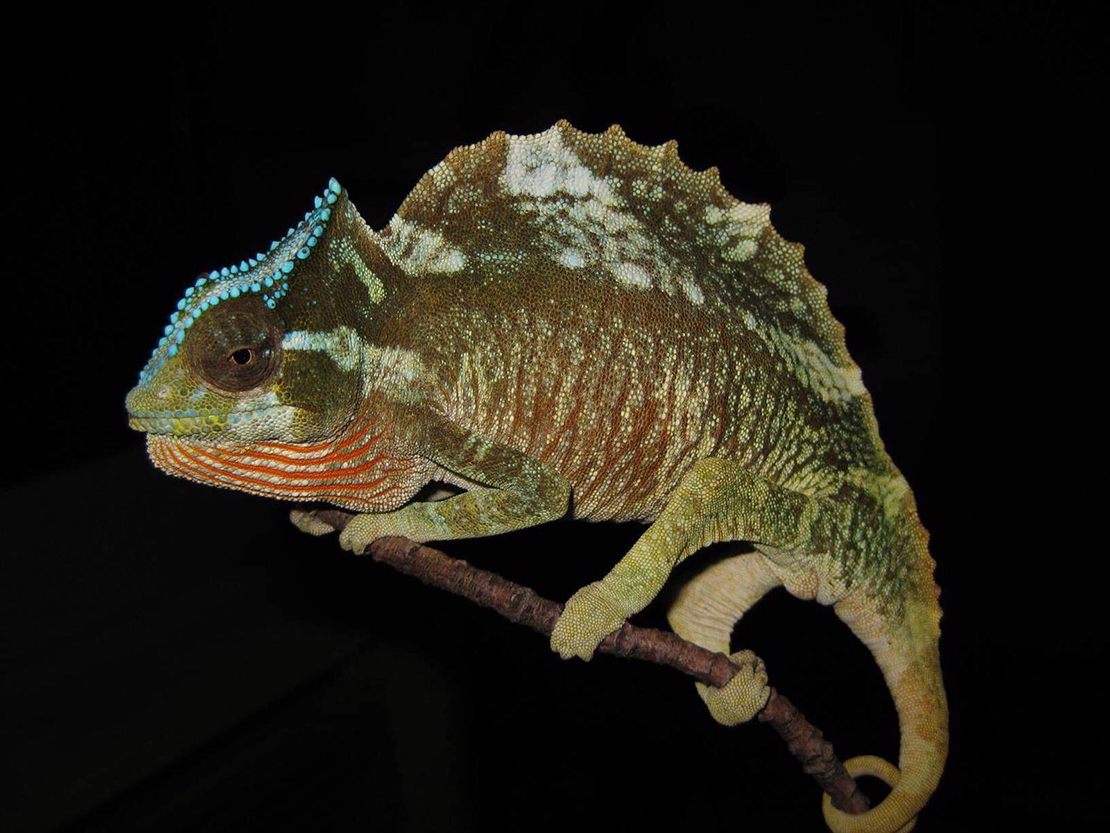
Banner image courtesy of Christian Kaul



